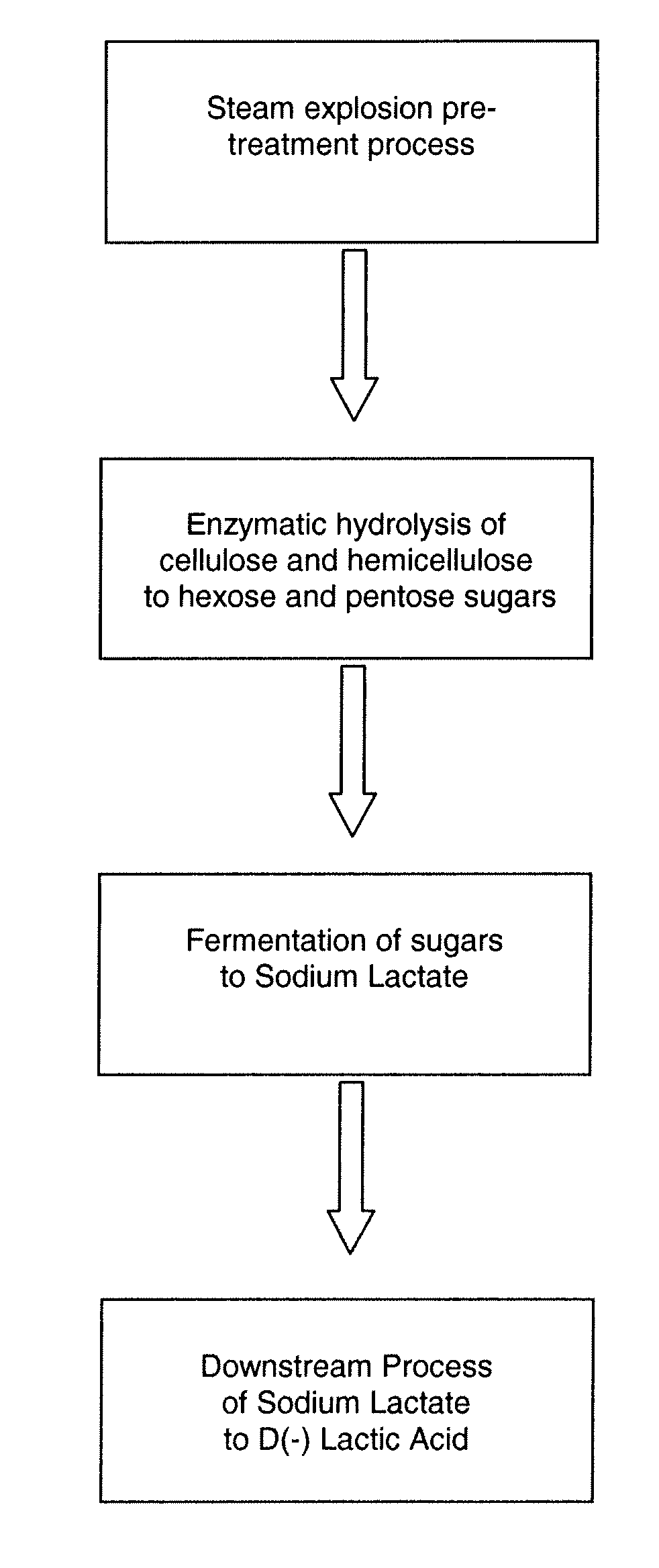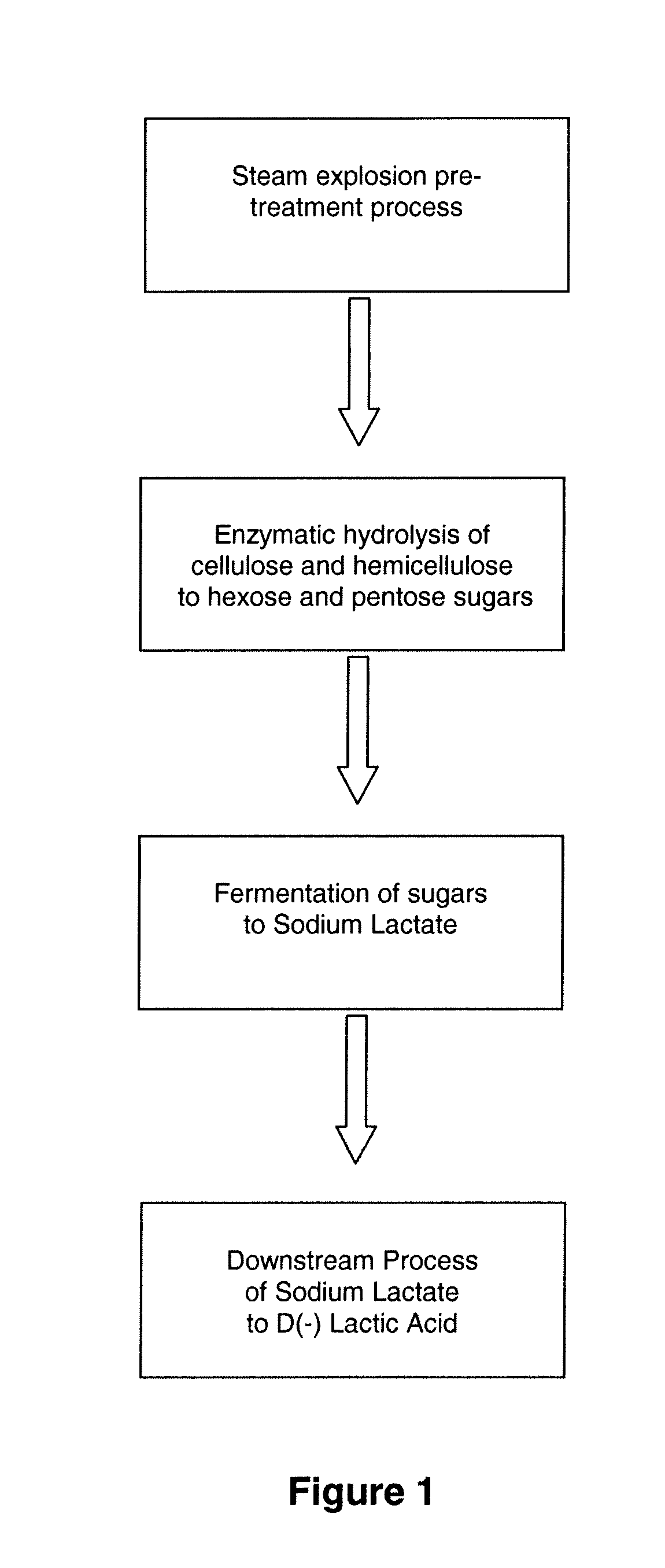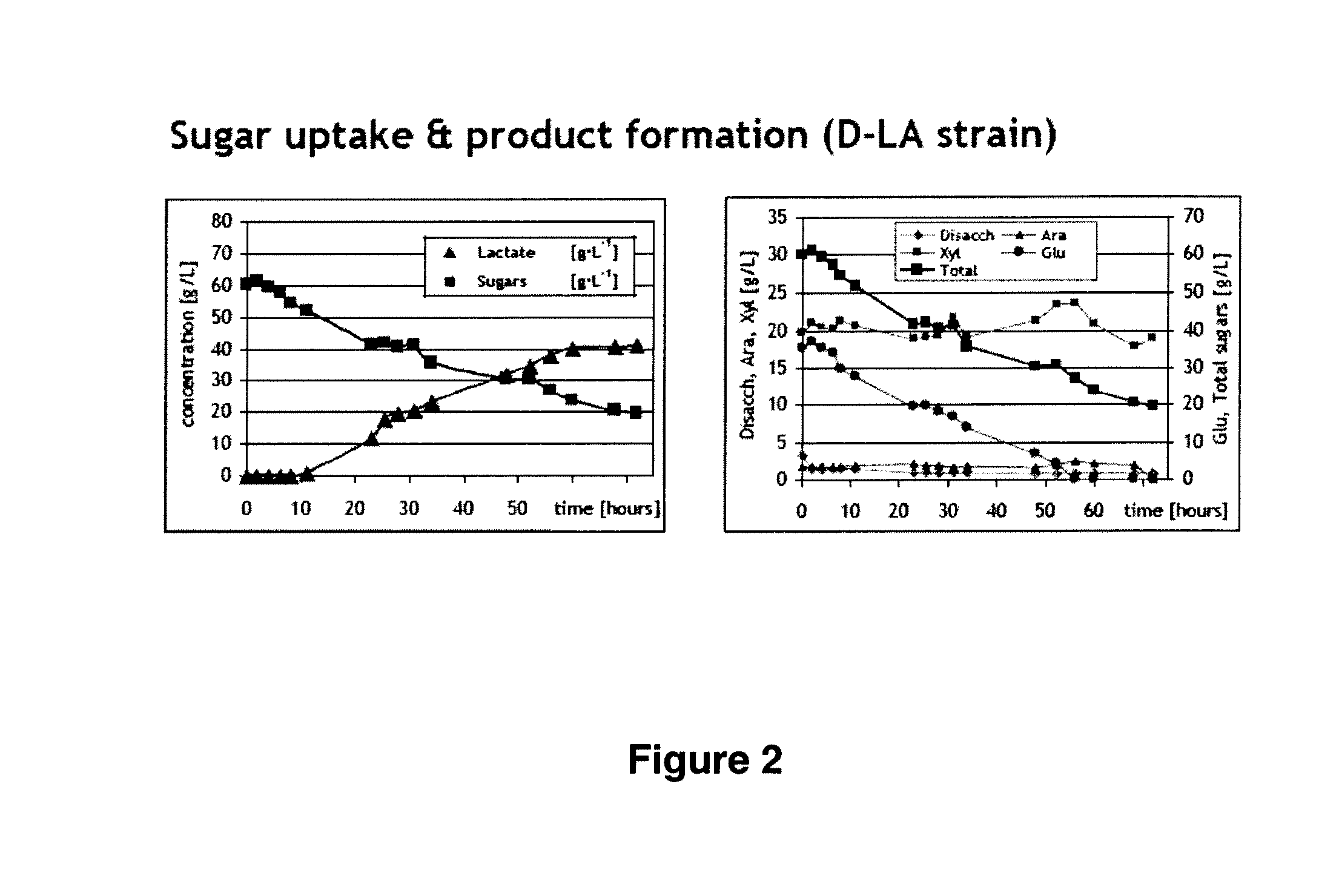D(-) lactic acid production
- Summary
- Abstract
- Description
- Claims
- Application Information
AI Technical Summary
Benefits of technology
Problems solved by technology
Method used
Image
Examples
Embodiment Construction
[0042]Referring to FIG. 1, there is provided a schematic overview of a method according to a first embodiment of the present invention. The method comprises 3 steps; a steam explosion pre-treatment process, an enzymatic hydrolysis step and a fermentation step. The enzymatic hydrolysis step comprises hydrolysis of cellulose and hemicelluloses to pentose and hexose sugars. The fermentation step comprises the addition of Lactobacillus strain designation 30 of Lactobacillus coryniformis subsp. Torquens to the hydrosylate to result in the production of D(-) lactic acid.
[0043]The following is an example of a method according to the invention:
[0044]1. Lignocellulosic material is placed under pressure and high Temperature using steam in a proprietary ‘steam explosion’ system. Residence time is approximately 2 to 3 minutes at approximately 200° C. and 15 bar pressure.
[0045]2. The material is released explosively into an expansion chamber at which time the cellulose, hemicellulose and lignin ...
PUM
| Property | Measurement | Unit |
|---|---|---|
| Temperature | aaaaa | aaaaa |
| Temperature | aaaaa | aaaaa |
| Fraction | aaaaa | aaaaa |
Abstract
Description
Claims
Application Information
 Login to view more
Login to view more - R&D Engineer
- R&D Manager
- IP Professional
- Industry Leading Data Capabilities
- Powerful AI technology
- Patent DNA Extraction
Browse by: Latest US Patents, China's latest patents, Technical Efficacy Thesaurus, Application Domain, Technology Topic.
© 2024 PatSnap. All rights reserved.Legal|Privacy policy|Modern Slavery Act Transparency Statement|Sitemap



